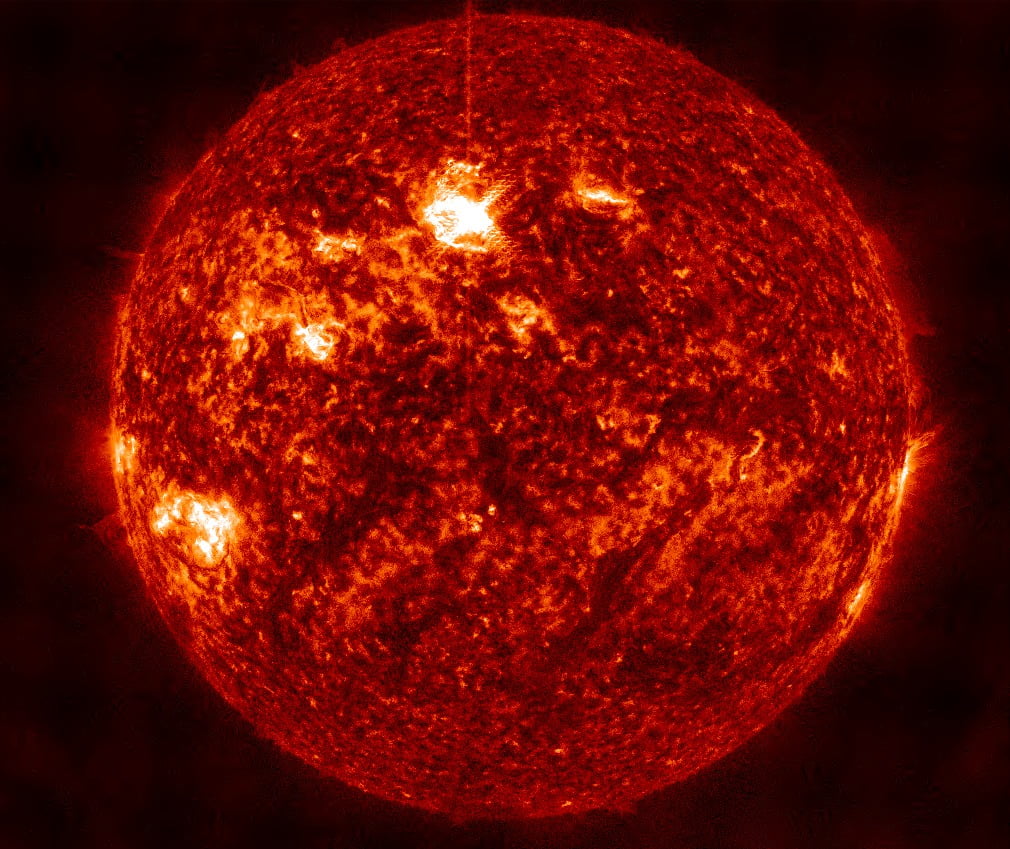A major solar flare measuring X1.6 erupted from Active Region 3663 (beta-delta) at 02:22 UTC on May 3, 2024. The event started at 02:11 and ended at 02:27 UTC.
A Type II Radio Emission, with an estimated velocity of 959 km/s, was associated with the event, indicating a coronal mass ejection (CME) was produced.
A Type IV emission was detected at 02:33 UTC. Type IV emissions occur in association with major eruptions on the sun and are typically associated with strong coronal mass ejections and solar radiation storms.
Additionally, a 10 cm Radio Burst (tenflare) lasting 4 minutes and with a peak flux of 660 sfu was detected from 02:19 to 02:23 UTC. A 10cm radio burst indicates that the electromagnetic burst associated with a solar flare at the 10cm wavelength was double or greater than the initial 10cm radio background.
This can be indicative of significant radio noise in association with a solar flare. The noise is generally short-lived but can cause interference for sensitive receivers including radar, GPS, and satellite communications.





Radio frequencies were forecast to be most degraded over Australia, east Asia, and the Pacific Ocean at the time of the flare.
The latest X-class flare (X1.6) flare in AR 13663 was certainly not “just a flare.” Its eruptive signatures were not outstanding but at least worth making this kind of movie. The CME from this eruption was largely directed north, and may not come to Earth – but we never know. pic.twitter.com/YTzjZ4QY3Y
— Halo CME (@halocme) May 3, 2024
One of my favorite tools, Solar Demon, is showing an EUV wave associated with the CME currently lifting off the Sun due to an X1.6 flare from AR 3663. I think it’s safe to say there is something coming.
Here are the data on Solar Demon:https://t.co/02VWYSvvq7@halocme pic.twitter.com/fSy17CbVkV
— Vincent Ledvina (@Vincent_Ledvina) May 3, 2024
Analysis of this event is still in progress. However, it seems we might dodge this one as most of the ejecta appears to be heading north.




Solar activity was at moderate levels in 24 hours to 00:30 UTC on May 3, due to flaring activity from regions 3663 and 3664, including M1.0 at 02:17 UTC and M2.7 at 20:57 UTC on May 2.
Solar wind parameters were slightly enhanced until 13:17 UTC on May 2 when a shock was observed at the ACE spacecraft indicating the arrival of a CME, possibly from April 29.
Total field increased to 19 nT while solar wind speed only increased to near 400 km/s. Solar wind speed further increased to around 450 km/s with total field remaining in the 17 to 20 nT range. Prolonged periods of southward Bz were observed reaching -19 nT.


CME impact on Earth was detected at around 14:12 UTC (29 nT at HAD magnetometer), resulting in G3 -Strong geomagnetic storm conditions.


According to Dr. Tamitha Skov, a noted space weather physicist, this activity was due to two stealth coronal mass ejections (CMEs) — the first impacting Earth on May 1 and the second on May 2.
“Both of these events have eluded detection by several (if not all of the big space weather forecasting agencies) so it is clear, stealthy solar storms continue to be a problem through solar maximum.”
Featured image: X1.6 solar flare on May 3, 2024. Credit: NASA/SDO AIA 304, Helioviewer, The Watchers
Two stealth CMEs impact Earth, sparking G3 – Strong geomagnetic storm
Thursday, May 2, 2024
Rare quadruple solar flare event on April 23, 2024
Wednesday, April 24, 2024
G2 – Moderate geomagnetic storm levels forecast as two more CMEs approach Earth
Wednesday, April 17, 2024
Two incoming CMEs to combine with CH HSS and produce G1 – Minor geomagnetic storming
Sunday, April 14, 2024
Long-duration M9.4 solar flare erupts from Region 3615
Sunday, March 31, 2024
Strong X1.1 solar flare erupts from AR 3615
Thursday, March 28, 2024
Strong M6.1 solar flare erupts from Region 3615
Thursday, March 28, 2024